A beginner’s guide to Miso soup
If you are not new to Japanese cuisine, then you are probably familiar with miso soup which is usually served with Japanese meals. But have you ever wondered what exactly miso soup is and how the Japanese prepare it?
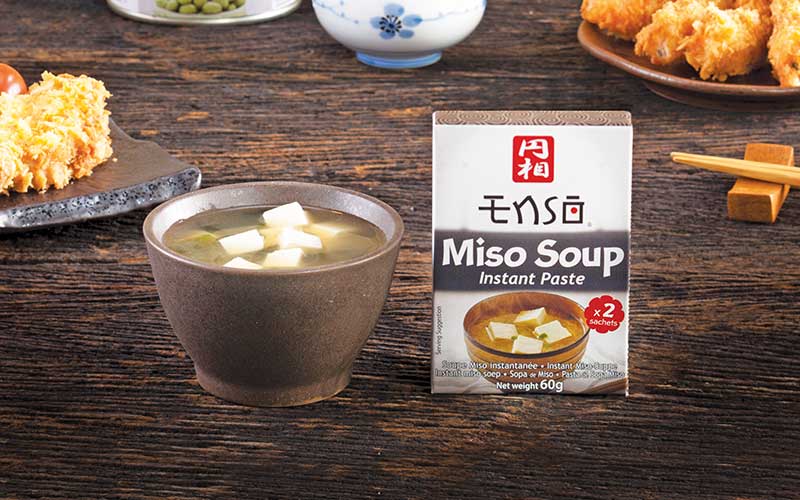
What is Miso soup and what is it made of?
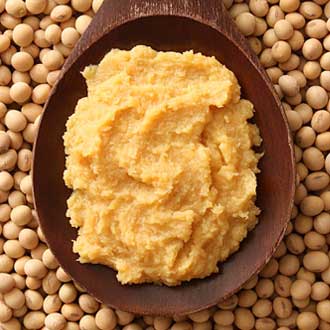
Miso soup, or misoshiru, is a traditional soup made from a simple combination of a dashi stock and miso paste. Dashi is a basic Japanese soup stock, used extensively in Japanese cooking and normally made with dried bonito flakes, kelp and anchovy.
While miso is a Japanese seasoning, made by fermenting soybeans with salt and rice koji (the fungus Aspergillus oryzae). Sometimes other ingredients like rice, barley, or seaweed are added. The result is a thick paste used for sauces and spreads, pickling vegetables, marinades, glazes and condiments and soups.
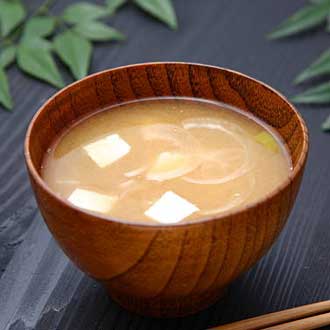
The base of miso is simple, but there are many optional ingredients (various vegetables, tofu, seaweed, etc.) that may be added depending on regional and seasonal recipes, as well as personal preference.
There are hundreds of varieties of this classic Japanese staple found across the country, and it can reflect local customs. In Japanese food culture, miso soup is a representative of soup dishes served with rice. Miso soup is also called Omiotsuke.
Typically, the paste and the soup have a salty-sweet richness and deep savory flavor, with a variety of textures. But its flavor and aroma also depend on the ingredients and fermentation process.
Is Miso Soup healthy?
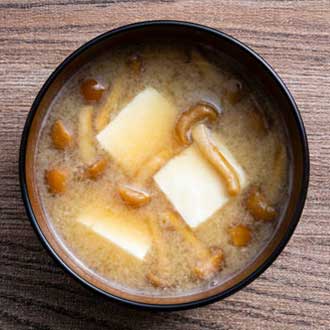
Besides its deliciousness, miso soup is packed with nutrients and health benefits. Miso has been used for centuries as a probiotic to improve the digestive system, reduce the risk of inflammatory bowel disease, strengthen the immune system, lower bad cholesterol and provide beneficial B12 vitamins.
Miso helps the body maintain nutritional balance. It is loaded with other nutrients along with its beneficial bacteria and enzymes. The soup contains all 20 essential amino acids, making it a complete protein, and is abundant in antioxidants.
Miso soup also tends to be relatively low in calories, but you can ingest the protein contained in miso and the dietary fiber and vitamins contained in various ingredients together with the broth.
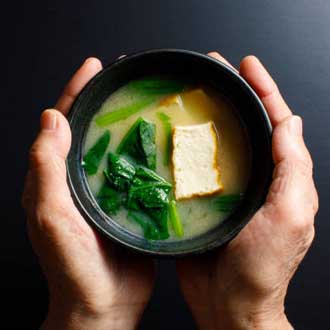
Many studies have shown the health benefits of miso soup, including reducing the risk of lung, prostate, and colon cancer, and protection from radiation. In 2003, researchers at Japan's National Cancer Centre suggested that "eating three or more bowls of the Japanese delicacy Miso soup every day could cut women's risk of developing breast cancer".
Studies in 2020 have shown that habitual consumption of miso soup has the effect of lowering blood pressure and the heart rate, or it has the effect of proliferating good bacteria in the intestines and helping prevent constipation.
The soup is also low in calories and a few ingredients in particular make miso soup a good choice for a healthy diet. However, its high sodium content can be a concern. But if you can make the soup at home, you can limit the sodium.

Miso soup ingredients
Miso soup is made from miso paste as well as a Dashi. Dashi stock (the base for the soup) is a combination of dried sardines, dried kelp, and shavings of dried smoked bonito or dried shiitake mushrooms.
In addition, miso paste is what gives the soup most of its character and flavour. Miso paste can be categorized into red (akamiso), white (shiromiso), or mixed (awase). Red miso has higher quantities of soybeans than other grains. It has a darker brown-reddish color and is strongly flavored, while the white miso paste has less soybeans and so its coloring is more beige than red and has milder flavor.
The mixed miso (awase) can be made blending two or more types of miso paste together and is used for various cooking. The fermenting process and time also affected miso taste, the longer the paste has been aged, the richer miso soup will taste.
While cooking the soup, you can add a few extra ingredients or toppings to add texture and more flavors. This comes down to personal preference, although typical additions include crisp or sliced spring onions, tofu, wakame seaweed mushrooms, fish, and/or shellfish. The soup is generally served as a small portion side dish to complement a meal, such as a bowl of rice, sashimi or steak.
How to make Miso Soup

Miso soup is easy to make and ingredients are available in most local grocery stores. However, a few ingredients, particularly miso paste, can be found in specialty Asian stores or you can also buy the miso paste online.
Traditional miso soup is made from scratch, with miso paste and prepared toppings being stirred through hot dashi. However, now there are more tools and ingredients available that make life easier, like instant miso soup, that allow you to make a tasty miso soup in seconds just by adding ingredients into hot water and stirring.
One way to make a simple and easy Miso soup – you need a miso paste, wakame seaweed or nori seaweed, chopped spring onion and diced tofu. Start by boiling water and add miso paste in the water. Add seaweed, diced tofu and spring onions into the soup, stir well and then serve it in a small bowl with steamed rice or other dishes.
Very quick and easy, but tasty nonetheless. You can learn how to make a Miso Soup here.
How to eat Miso Soup

Miso soup is usually served in most Japanese meals throughout the day, including breakfast, lunch and dinner. Traditionally, Japanese serve miso soup in a small bowl, but there is no soup spoon provided. It is expected that you drink from the bowl.
The Japanese way to drink miso soup is to place a bowl in one hand, with four fingers supporting the base of the bowl, while the thumb rests comfortably on the side of the bowl. When the broth is sipped, you can use your free hand to support the bowl.
To eat the solid ingredients of the miso soup, chopsticks are used; however, the bowl should still be cradled in one hand and lifted closer to your mouth, similarly to eating steamed rice.

